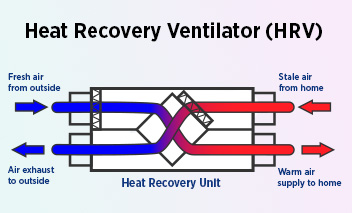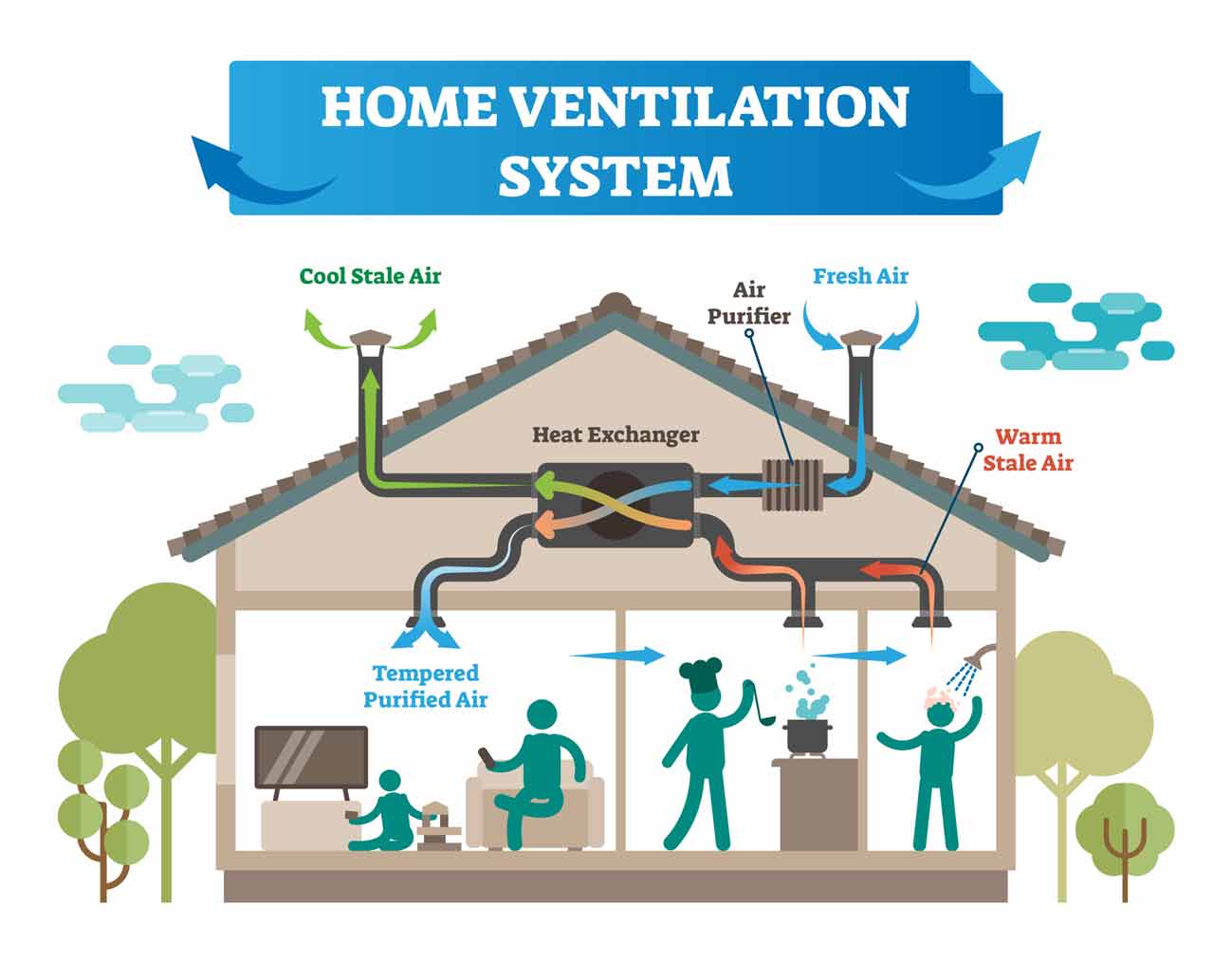Common Questions About HRV Answered
Wiki Article
The All-Inclusive Guide to the Uses of Heat Recovery Ventilation in Modern Buildings
Heat Recovery Ventilation (HRV) systems stand for a substantial innovation in constructing innovation (HRV Heat Recovery Ventilation). They supply a method for exchanging stagnant interior air with fresh outdoor air while lessening power loss. This technique not just enhances interior air high quality however also adds to power efficiency in both property and industrial structures. Understanding the numerous applications and advantages of HRV can reveal its critical function in modern design and sustainability efforts. The effects of this technology deserve checking out betterUnderstanding Heat Recovery Ventilation Solutions

Lots of contemporary buildings prioritize power effectiveness, recognizing warm recovery ventilation (HRV) systems is vital for enhancing interior air high quality and minimizing energy usage. HRV systems work by moving warmth from stagnant interior air to incoming fresh air, successfully keeping comfy interior temperatures while decreasing power loss. These systems are composed of a warmth exchanger, followers, and ductwork that promote the flow of air. During winter, HRV devices catch and recycle warmth from the outbound air, while in summertime, they can assist cool inbound air. By continuously exchanging air, HRV systems additionally reduce humidity and the concentration of indoor pollutants. Appropriate setup and upkeep of HRV systems are important for their performance and performance in improving total structure performance and convenience.
Advantages of Heat Recovery Ventilation
Heat recovery ventilation systems use many benefits that boost both power efficiency and interior air high quality in modern-day buildings. By recording and recycling power from exhaust air, these systems significantly reduce home heating and air conditioning prices, leading to reduced energy usage. In addition, they maintain a stable circulation of fresh outside air, reducing the threat of indoor air pollutants and irritants. This continuous exchange helps control humidity degrees, avoiding mold and mildew growth and making sure a healthier living environment. In addition, HRV systems add to sustainability goals by decreasing total carbon impacts. Their ability to maximize ventilation without giving up thermal convenience makes them an important addition to contemporary building style, promoting both economic and eco-friendly advantages.Applications of HRV in Residential Buildings
As property owners significantly focus on energy efficiency and indoor air quality, the applications of warmth recuperation air flow (HRV) systems in property structures have come to be a lot more common. HRV systems are particularly useful in tightly sealed homes, where preserving fresh air circulation is vital for avoiding wetness accumulation and indoor toxins. They efficiently move heat from outward bound stale air to incoming fresh air, reducing power prices related to heating and cooling. In addition, dig this HRVs can enhance convenience degrees by controling moisture and temperature level. They are also versatile for various household designs, including single-family homes and multi-unit structures. Overall, integrating HRV systems sustains lasting living practices while guaranteeing a much healthier interior setting for owners.HRV in Industrial and Commercial Setups
In industrial and commercial setups, the implementation of warm recuperation ventilation (HRV) systems has actually become progressively important for optimizing energy efficiency and keeping air high quality. These systems efficiently transfer warmth from exhaust air to incoming fresh air, reducing the need for added heating or air conditioning. This not only decreases energy expenses however additionally adds to sustainability campaigns. Industries such as production, warehousing, and office complex profit significantly from HRV systems, as they help control temperature and humidity levels, guaranteeing a comfy and productive setting. HRV systems aid in removing pollutants and excess wetness, improving indoor air quality. As policies around air top quality come to be stricter, the fostering of HRV modern technology is most likely to expand, making it a crucial part of modern business and commercial facilities.Future Patterns in Heat Recovery Ventilation Technology

Frequently Asked Concerns
Exactly How Does Heat Recovery Ventilation Impact Indoor Air Quality?
Heat recovery ventilation significantly boosts indoor air top quality by continually exchanging stale interior air with fresh outside air while recuperating power. This procedure lowers contaminants, maintains perfect moisture levels, and assures a healthier environment for owners.Can HRV Solutions Be Installed in Existing Buildings?
HRV systems can without a doubt be installed in existing buildings. Retrofitting may need modifications to ductwork and air flow designs, yet it substantially enhances energy efficiency and interior air quality, making it a viable useful source choice for older structures.What Maintenance Is Needed for HRV Equipments?

Exist Specific Climates Where HRV Is Extra Effective?
Heat recovery ventilation systems are particularly efficient in environments with significant temperature level differences between seasons. These systems maximize energy performance by recouping heat from exhaust air, making them optimal for both cool and reasonably cozy atmospheres.How Do HRV Equipments Affect Energy Costs?

Report this wiki page